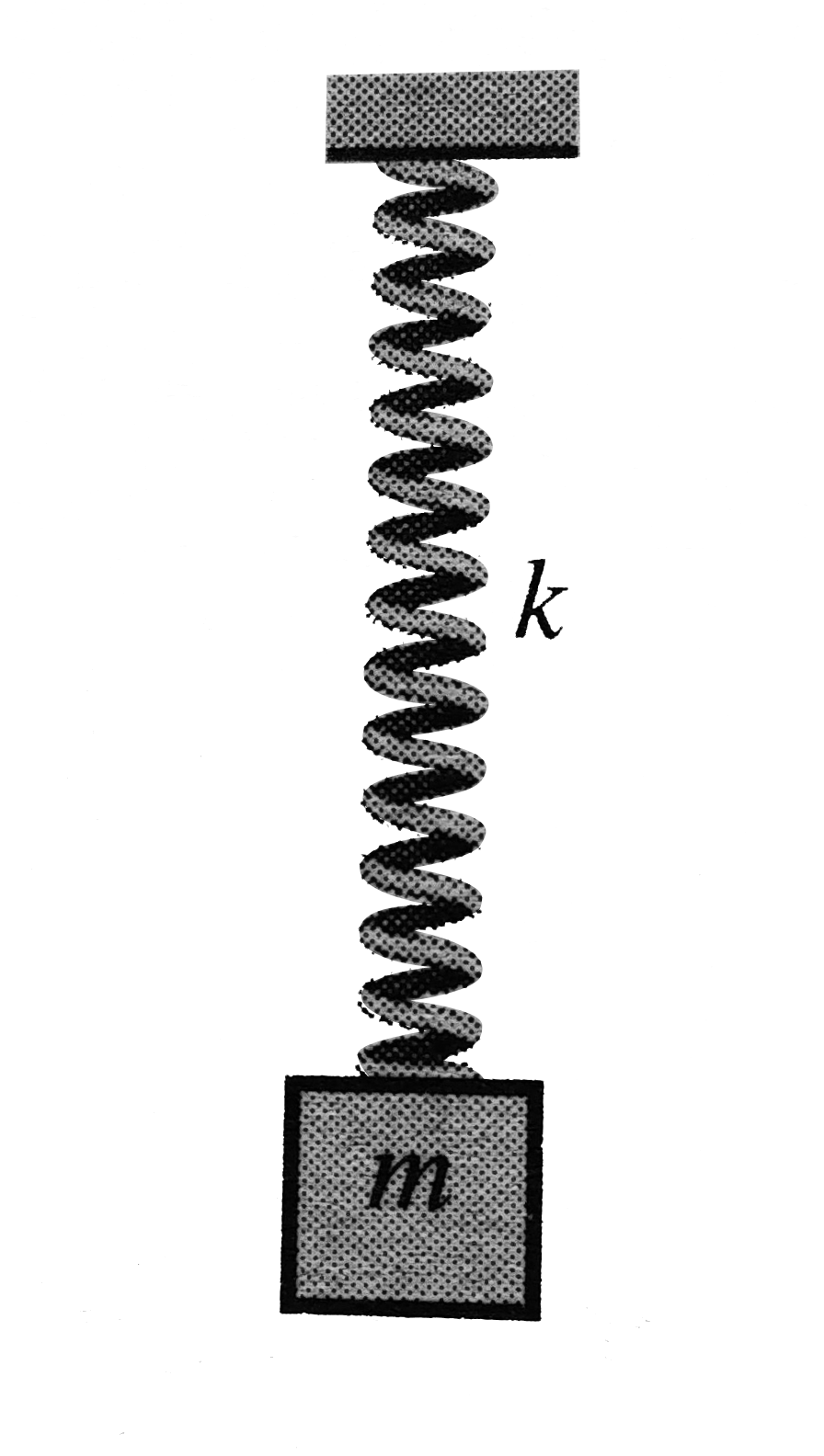A linear harmonic oscillator of force constant and amplitude (0.01 m) has a total mechanical energy of (160 J). Its.
maximum potential enregy is
maximum potential energy is
maximum potential energy is zero
maximum potential energy is 100J
The correct Answer is:A
To solve the problem regarding the linear harmonic oscillator, we will follow these steps:
Step 1: Understand the System
We are given:
- Force constant (k) = 2×106N/m
- Amplitude (A) = 0.01m
- Total mechanical energy (E) = 160J
Step 2: Recall the Energy in a Simple Harmonic Oscillator
In a simple harmonic oscillator, the total mechanical energy (E) is given by the sum of kinetic energy (KE) and potential energy (PE). At the maximum displacement (amplitude), all the energy is potential, and at the mean position, all the energy is kinetic.
Step 3: Maximum Potential Energy
At the maximum displacement (which is the amplitude), the potential energy is maximum, and the kinetic energy is zero. Therefore, the maximum potential energy (PE_max) is equal to the total mechanical energy (E).
PEmax=E
Step 4: Substitute the Values
Since we know the total mechanical energy is given as 160J:
PEmax=160J
Step 5: Conclusion
Thus, the maximum potential energy of the linear harmonic oscillator is:
Maximum Potential Energy=160J
Final Answer
The maximum potential energy is 160J.
---
We are given:
- Force constant (k) = 2×106N/m
- Amplitude (A) = 0.01m
- Total mechanical energy (E) = 160J
In a simple harmonic oscillator, the total mechanical energy (E) is given by the sum of kinetic energy (KE) and potential energy (PE). At the maximum displacement (amplitude), all the energy is potential, and at the mean position, all the energy is kinetic.
At the maximum displacement (which is the amplitude), the potential energy is maximum, and the kinetic energy is zero. Therefore, the maximum potential energy (PE_max) is equal to the total mechanical energy (E).
Since we know the total mechanical energy is given as 160J:
Thus, the maximum potential energy of the linear harmonic oscillator is:
The maximum potential energy is 160J.
Similar Questions
Knowledge Check
A simple harmonic oscillator has a frequency of 2.5 Hz and an amplitude of 0.05m. What is the period of the oscillations?
A0.4sB0.2sC8sD20s
A harmonic oscillation of force constant 4×106Nm−1 and amplitude 0.01 m has total energy 240 J. What is maximum kinetic energy and minimum potential energy?
View Solution
For the spring pendulum shown in fig. the value of spring constant is 3×104Nm and amplitude of oscillation is 0.1m. The total mechanical energy of oscillating system is 200 J. Mark out the correct option (s).
View SolutionPassage I) In simple harmonic motion force acting on a particle is given as F=−4x, total mechanical energy of the particle is 10 J and amplitude of oscillations is 2m, At time t=0 acceleration of the particle is −16ms2. Mass of the particle is 0.5 kg.
At x=+1m, potential energy and kinetic energy of the particle are
View SolutionPassage I) In simple harmonic motion force acting on a particle is given as F=−4x, total mechanical energy of the particle is 10 J and amplitude of oscillations is 2m, At time t=0 acceleration of the particle is −16ms2. Mass of the particle is 0.5 kg.
Potential energy of the particle at mean position is
View SolutionPassage I) In simple harmonic motion force acting on a particle is given as F=−4x, total mechanical energy of the particle is 10 J and amplitude of oscillations is 2m, At time t=0 acceleration of the particle is −16ms2. Mass of the particle is 0.5 kg.
Displacement time equation equation of the particle is
View SolutionA particle of mass 40 g executes a simple harmonic motion of amplitude 2.0 cm. If the time period is 0.20 s, find the total mechanical energy of the system.
View SolutionA particle of mass 40 g executes a simple harmonic motion of amplitude 2.0 cm. If the time period is 0.20 s, find the total mechanical energy of the system.
View Solution
